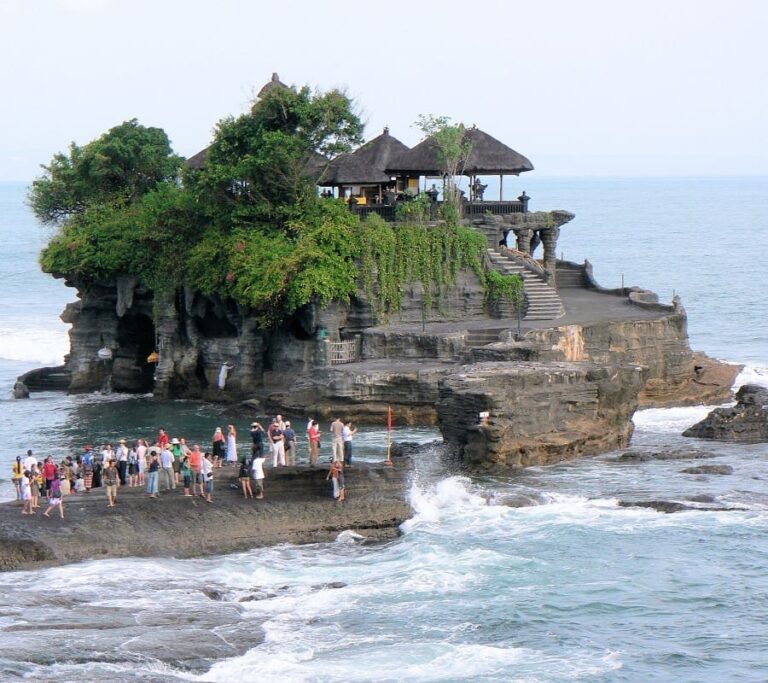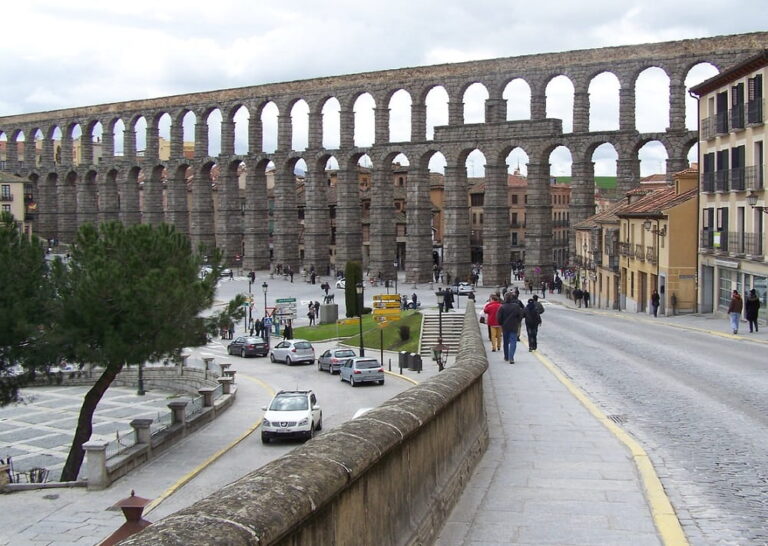10 Largest Freshwater Lakes in the World by Surface Area
Last Updated on 2nd August 2023 by admin
Lakes are natural wonders that enchant us with their splendor and ecological significance. Among them, freshwater lakes hold a special place, providing us with clean water, supporting various ecosystems, and offering recreational opportunities. These lakes are usually located in low-lying areas and get their water from rivers, streams and rainfall.
In this article, we will explore the 10 largest freshwater lakes in the world based on their surface area, each boasting unique features that make them exceptional. These lakes are home to many flora and fauna species.
Here is the list of the 10 largest freshwater lakes in the world by Surface Area !
10) Lake Erie
Area: 25,774 sq km
Location: North America (Great lakes)
Discoverer: Lois Joliet
Feature:
Lake Erie is one of the five Great Lakes of North America, located on the border between the United States and Canada. Lake Erie is the 10th largest freshwater lake in the world by surface area, the fourth largest lake by volume, covering approximately 9,910 square miles. Being the shallowest of the five, with an average depth of about 62 feet and it is also reaches a depth of 210 feet at its deepest point. Lake Erie is known for its warm waters, making it a popular destination for recreational activities such as swimming and boating.
Fish habitat:
Lake Erie is famous for its thriving fish population, making it a significant fishery in the region. The lake supports a diverse array of fish species, including Walley, yellow perch, white perch, rainbow smelt, Alewife, and big mouth buffalo are all prominent freshwater fish found here. The nutrient-rich waters and abundance of aquatic vegetation create an ideal habitat for these fish, making it a haven for anglers and commercial fishermen alike.
Flora and fauna:
Extensive wetlands and marshes surrounding the lake provide vital nesting and breeding grounds for numerous bird species, including herons, egrets, and waterfowl. You can witness black bears, foxes, coyotes, otter, moose, elk, white-tailed deer, beavers, grey wolf, and other animals on Lake Erie. Whooping cranes, snowy owls, wood ducks, piping plovers, and bald eagles are the main bird species found here. Additionally, Lake Erie supports diverse aquatic plant life, such as water lilies, watermilfoil, and various types of algae, contributing to the lake’s overall biodiversity.
Human Settlement:
Lake Erie’s shores have long been inhabited by indigenous peoples and, later, European settlers. Today, numerous cities and communities thrive along its coastline, with major cities such as Buffalo, Cleveland, and Toledo situated on its shores. Pelee Island, Turtle Island, and South Bass Island are the three main islands in Lake Erie. The lake plays a crucial role in supporting local economies through commercial shipping, tourism, and recreational activities.
9) Great Slave Lake
Area: 27,200 sq km
Location: Canada
Discoverer: Samuel Hearne

Feature:
The Great Slave Lake, located in Canada’s Northwest Territories, is the second-largest lake in Canada. It is the 9th biggest freshwater lake in the world and the deepest lake in North America, with a depth of 2014 feet at its deepest point. The lake is named after an Indian tribe that was enslaved, the lake covering approximately 10,500 square miles, it is a prominent feature of the Northern landscape. Slave River, Hay River, Taltson River, Snare River, Lockhart River, and Yellow Knife River are the lake’s principal inflow sources. Mackenzie is the lake’s main outflow.
Fish habitat:
Great Slave Lake is famous for its thriving fish habitat. The lake supports a diverse range of fish species, including lake trout, northern pike, whitefish, cisco and Arctic grayling. The cold, clear waters offer ideal conditions for these fish to thrive, making it a popular destination for fishing enthusiasts seeking a chance to catch trophy-sized fish.
Flora and fauna:
The lake’s diverse flora and fauna add to its ecological significance. The surrounding boreal forests are home to a variety of wildlife, including moose, caribou, and black bears. The lake also attracts a vast array of migratory birds, adding to the region’s biodiversity. Animal, reptile, and bird species found near the Great Lake also include grizzly bears, hippopotamus, crocodiles, pelicans, eagles, gulls, arctic tern, and kingfishers.
Human Settlement:
Great Slave Lake has been a significant area of human settlement for thousands of years. Indigenous peoples, such as the Dene and Métis, have long relied on the lake’s resources for their sustenance and way of life. In more recent times, several communities, including Yellowknife, Hay River, and Fort Resolution, have sprung up along the lake’s shores, serving as hubs for economic activities, transportation, and cultural exchange. The cities of Alberta, Athabasca, Barrhead, and Westlock, Canada, all thrive around Great Slave Lake. The region is economically strong because of gold and diamond mining near the lake’s shoreline.
8) Lake Malawi
Area: 29,600 sq km
Location: Africa (Great Lakes of Africa)
Discoverer: Dravid Livingstone
Feature:
Lake Malawi, also known as Lake Nyasa, is one of Africa’s Great Rift Valley lakes and is the third-largest lake on the continent by surface area. It is the 8th largest freshwater lake in the world, and the 5th largest freshwater lake in terms of volume. Lake Malawi has formed some 2 million years ago as a result of a volcanic eruption. Spanning approximately 11,400 square miles, it is a massive freshwater lake that stretches between Malawi, Mozambique, and Tanzania. The Malawi lake is 2316 feet deep at its deepest point. River Ruhuhu is the main source of water for this ancient river, which goes out as the Shire River.
Fish habitat:
Lake Malawi is famous for its incredible fish habitat, particularly its astounding variety of cichlid fish species. It is home to over 1,000 unique cichlid species found nowhere else on Earth. These colorful and diverse fish have evolved to occupy various ecological niches within the lake, making it a paradise for ichthyologists and aquarium hobbyists seeking to explore its biodiversity. The lake is home to a variety of fish species that are the primary food supply for the people that live nearby. Sardines, kampango, catfish, and cichlids are some of the most prevalent species.
Flora and fauna:
The lake’s ecological significance extends beyond its fish habitat. The surrounding areas support lush vegetation, including tropical forests and grasslands, providing habitats for various wildlife species. Lake Malawi National Park, a UNESCO World Heritage site, protects a significant portion of the lake’s biodiversity, including its diverse flora and fauna. Around the gorgeous lake, Nile crocodiles, hippopotamuses, African fish eagles, and monkeys can be found.
Human Settlement:
Lake Malawi’s shores have been inhabited by human communities for centuries. Numerous fishing villages and towns dot the coastline, with fishing being a critical economic activity for local residents. Fishing is not only a means of sustenance but also an integral part of the region’s cultural heritage, with traditional fishing techniques passed down through generations. Lilongwe, Blantyre, Malawi, Mzuzu, and Zomba are the major cities surrounding Lake Malawi. Here you will find people of many religions and cultures. Tea, tobacco, and sugarcane were the main industries that thrived here.
7) Great Bear Lake
Area: 31,153 sq km
Location: Canada
Discoverer: Sir John Franklin

Feature:
Great Bear Lake, situated in Canada’s Northwest Territories, is the largest lake entirely within Canada and ranks as the 7th largest freshwater lake in the world by surface area. Covering approximately 12,000 square miles, it is a colossal body of water surrounded by a vast wilderness of rugged landscapes, boreal forests, and remote beauty.The deepest point of the lake is around 446 meters ( 1463 feet) . The Whitefish River, Big Spruce River, Haldane River, Sloan River, Bloody River, and Dease River are the principal rivers that feed the Great Bear Lake.
Fish habitat:
Great Bear Lake is famous for its exceptional fish habitat, White suckers, Burbot, White Fish, and Trout are some of the common fish species found in the lake. The lake sustains one of the healthiest Arctic char populations globally, attracting anglers from around the world eager to catch these prized fish. The crystal-clear waters and nutrient-rich environment create ideal conditions for fish to thrive, making it a hotspot for fishing enthusiasts.
Flora and fauna:
The lake’s surrounding wilderness is home to a diverse range of flora and fauna. The boreal forests provide habitats for a variety of wildlife, including various animal species such as caribou, black bears, moose, muskat, musk ox, fox beaver, arctic hare, wolf, and wolverine live along the picturesque lake shoreline. The lake also supports unique bird species, such as loons and sandhill cranes, adding to its ecological significance.
Human settlement:
Great Bear Lake holds great cultural and historical importance for indigenous peoples, particularly the Sahtú Dene and Métis communities. For generations, these communities have relied on the lake’s resources for their livelihoods and cultural practices. Fishing, hunting, and gathering have been integral to their way of life, sustaining their communities for centuries. The main cities settled around Great Bear Lake are Tuktoyatuk, Fort Simpson, Yellowknife, Inuvik and Behchoko
6) Lake Baikal
Area: 31,722 sq km
Location: Siberia (Russia)
Discoverer: Kurbat Ivanov
Feature:
Lake Baikal, situated in Siberia, Russia, is a natural wonder and holds several remarkable distinctions. It is the world’s deepest and oldest freshwater lake, covering approximately 12,200 square miles. Baikal lake is the largest freshwater lake by volume and the 6th largest by surface area. This massive lake is the deepest of all the freshwater lakes in the world and the deepest point lies at 1,642 meters (5387 feet). The timeless lake is recorded to have existed for 25 million years ago, that is the reason it is counted among the world’s most ancient lakes. The main inflow source in the lake Baikal is Selenge, Reka Barquzin, Reka UDA, Reka, Chikoy, Upper Angara, and river Khilok.
Fish habitat:
Lake Baikal is home to an exceptional array of fish species, with over 2,000 known varieties, of which 80% are endemic to the lake. The most famous resident is the Baikal omul, a species of freshwater salmon that plays a vital role in the local economy and culture. The lake’s cold, oxygen-rich waters create an ideal habitat for these fish to thrive, sustaining a significant fishery in the region.
Flora and fauna:
Beyond its diverse fish population, Lake Baikal supports a rich ecosystem of flora and fauna. Its shores are enveloped in lush taiga forests, home to a variety of wildlife, including sables, bears, and reindeer. The surrounding mountains provide habitats for rare species such as the Siberian ibex and snow leopards. Additionally, the lake hosts unique invertebrates, such as the Baikal freshwater seal, known as the nerpa, which is the only freshwater seal species in the world.
Human settlement:
Lake Baikal’s shores have been inhabited by indigenous Buryat and Evenk communities for centuries. Their traditional lifestyles revolve around fishing, hunting, and reindeer herding, harmoniously coexisting with the lake’s pristine environment. In recent times, the lake has also become a popular destination for eco-tourism, drawing in visitors who wish to explore its natural beauty and learn about the rich indigenous cultures. Famous cities along the shoreline of Lake Baikal are Baykalsk, Slyudyanka, Severobaykalsk and Ust-Barguzin.
5) Tanganyika Lake
Area: 32,900 sq km
Location: Africa (Great lakes)
Discoverer: Richard burton and John Speke
Feature:
Lake Tanganyika, located in East Africa, is one of the most remarkable freshwater lakes on Earth. It is the world’s second-deepest and the longest freshwater lake, covering approximately 12,600 square miles and stretching over 420 miles in length. Bordering four countries—Tanzania, the Democratic Republic of the Congo, Burundi, and Zambia—Lake Tanganyika holds both ecological and cultural significance. The deepest point of the lake is around 1,470 meters (4826ft). Due to great depth, the deeper water is devoid of oxygen and is called fossil water. Rice is the main crop grown along the fertile shoreline.
Fish habitat:
Lake Tanganyika is celebrated for its unparalleled diversity of fish species, with over 350 known varieties inhabiting its waters. Among them are colorful cichlids, which make up the majority of the lake’s fish population. Many of these cichlid species are endemic to the lake, found nowhere else on Earth. Sleek Lates, Sprat, and sardine are the most common fish found in the lake.
Flora and fauna:
Lake Tanganyika’s surrounding landscapes host a variety of flora and fauna. The lush vegetation of the region provides habitat for diverse wildlife, including hippos, crocodiles, bald eagles, swans, kingfisher and a myriad of bird species. The lake also sustains a unique ecosystem of underwater plant life, including algae and aquatic plants that contribute to the lake’s ecological balance.
Human Settlement:
Lake Tanganyika’s shores have been inhabited by human communities for thousands of years. Indigenous tribes, such as the Bemba, Ha, and Tongwe, have relied on the lake’s resources for their sustenance and livelihoods. Fishing is a vital economic activity for these communities, providing both food and income. Fisheries and farming are frequent occupations for those who live around the coast. The Tanganyika basin is mineral-rich, making the soil ideal for a variety of crops. This magnificent lake is also one of the world’s oldest lakes, and it gives life to new species.
4) Lake Michigan
Area: 58,013 sq km
Location: North America (Great Lakes)
Discoverer: Nicolet
Feature:
Lake Michigan, one of North America’s Great Lakes and one of the famous attractions in USA. It is a natural marvel that captivates with its sheer size and breathtaking beauty. It is the 2nd largest freshwater lake by volume and the 4th largest lake by area. The deepest point of the lake is located at 281 meters (923 feet) deep. It covers approximately 22,400 square miles. Located entirely within the United States, Lake Michigan’s shores touch four states: Michigan, Wisconsin, Illinois, and Indiana.
Fish habitat:
Lake Michigan is home to a diverse range of fish species, supporting a thriving fishery in the region. Popular game fish such as lake trout, salmon, walleye, and perch attract anglers from across the country. The lake’s cold and nutrient-rich waters provide an ideal environment for these fish to thrive, making it a paradise for fishing enthusiasts seeking a rewarding catch.
Flora and fauna:
The surrounding areas of Lake Michigan are abundant with diverse flora and fauna. The lake’s coastal regions are adorned with dunes, wetlands, and forests, providing vital habitats for various wildlife species, including migratory birds, waterfowl, and small mammals. Slender naiad, pondweeds, bladderwort, and water celery are common plants seen in and around lake Michigan. Squirrels, rabbits, cougar, moose, bats and coyotes are animals native to Michigan lake.
Human Settlement:
Lake Michigan’s shores have been inhabited by human communities for centuries. Indigenous tribes, such as the Ojibwe, Potawatomi, and Menominee, historically relied on the lake’s resources for sustenance and trade. With the arrival of European settlers, the region saw the growth of cities and towns along the coastline, becoming centers of commerce, industry, and tourism. The major cities formed along the shoreline of Lake Michigan include Michigan, Indiana, Illinois, and Wisconsin. The lake’s shoreline is made up of beaches and sand dunes. These dunes make up the world’s largest freshwater dune system.
3) Huron lake
Area: 59,600 sq km
Location: North America (Great Lakes)
Discoverer: Samuel de Champlain and Entienne Brule
Feature:
Lake Huron, one of North America’s Great Lakes, is a majestic body of water that enchants with its vastness and serene beauty. As the second-largest of the Great Lakes by surface area and the 3rd largest freshwater lake in the world, it covers approximately 23,000 square miles. Situated on the Canada-United States border, Lake Huron’s shores touch the Canadian province of Ontario and the states of Michigan and Wisconsin. Its stunning landscapes, clear waters, and diverse ecosystems make it a haven for nature lovers and outdoor enthusiasts.
Fish habitat:
Lake Huron boasts a rich and diverse fish habitat, providing an ideal environment for various fish species to thrive. Among the most sought-after catches are walleye, Round Whitefish, Sea Lamprey,lake trout, whitefish, White Perch, Yellow Perch, and White Sucker and smallmouth bass. The lake’s cool waters and abundant food sources contribute to the robust fish populations, attracting anglers from far and wide.
Flora and fauna:
The coastal regions of Lake Huron are adorned with sandy beaches, dunes, and rocky outcrops, creating a varied landscape that supports diverse flora and fauna. The great Lake Huron encompasses a lush green forest area that includes Aspen, Pine, and hardwood forest. According to scientific investigations, Lake Huron also possesses underwater petrified trees that are over 7000 years old. Black bears, foxes, beavers, lynxes, river otters, and moose are the main animal species found here.
Human settlement:
Lake Huron has a rich history of human settlement. Indigenous communities, such as the Ojibwe, Odawa, and Potawatomi, have inhabited the area for centuries, relying on the lake’s resources for sustenance and cultural practices. With the arrival of European settlers, the region witnessed the growth of cities and towns along its shores, fostering trade, commerce, and tourism. The massive lake dwells in famous cities which are Sarnia, Port Huron, Alpana, Bay City, Cheboygan, Owen Sound, St, Ignace, and Goderich. There are 120 lighthouses guarding Lake Huron around its shore.
2) Lake Victoria
Area: 68,800 sq km
Location: Africa (Great lakes)
Discoverer: John Henning Speke
Feature:
Lake Victoria, the largest lake in Africa and the world’s 2nd largest freshwater lake by surface area, is a natural wonder that lies in East Africa. Covering approximately 26,600 square miles, the lake is shared by three countries: Tanzania, Kenya, and Uganda. Its vastness and ecological significance make it a vital resource for both wildlife and human communities. The lake was named after Queen Victoria. It is one of Africa’s Great Lakes. Rainfall is the primary source of input water into the lake, and the Kagera River is the largest river that feeds it.
Fish habitat:
Lake Victoria is famous for its rich fish habitat, making it one of the most productive freshwater fisheries globally. The lake sustains a diverse array of fish species, including the Nile perch, Cichlids, tilapia, and catfish, supporting livelihoods for millions of people engaged in fishing activities. However, the introduction of invasive species, such as the Nile perch, has led to ecological challenges, affecting native fish populations and the overall balance of the ecosystem.
Flora and Fauna:
The lake’s surroundings are lush with diverse flora and fauna. Wetlands, swamps, and islands in Lake Victoria are critical habitats for numerous bird species, such as cormorants, pelicans, and African fish eagles. Additionally, the lake is home to unique aquatic plant life and supports a variety of aquatic mammals, including Hippopotamus, African clawless otter, marsh mongoose, cane rats, Nile crocodile, and mud turtle are among the animals that can be found. World’s famous rivers the Nile is the only outflow of Lake Victoria, it is also the longest river in the world.
Human settlement:
Lake Victoria’s shores have been inhabited by human communities for centuries, with indigenous tribes, such as the Luo, Ganda, and Sukuma, relying on the lake’s resources for their livelihoods and cultural practices. Fishing remains a significant economic activity for many communities, providing food security and income. For innumerable villages and communities, the lake is a source of income through business, cultivation, and farming. Kenya, Uganda, and Tanzania are the three main settlements.
1) Lake Superior
Area: 82,103 sq km
Location: North America (Great Lakes)
Discoverer: Etienne Brule
Feature:
Lake Superior, the largest of North America’s Great Lakes and the largest freshwater lake in the world by surface area, with a depth of 406 meters (1333 feet) at its deepest point. Covering approximately 31,700 square miles, it stretches across the border of the United States and Canada. This gorgeous freshwater body holds 10% of the world’s entire freshwater supply. Lake Superior’s sheer size and breathtaking beauty have earned it the title of the “Greatest of the Great Lakes.” It gets its water from 300 rivers and streams. In the summer, it provides cool, fresh water with a temperature of 2 degrees Celsius (36 degrees Fahrenheit).
Fish habitat:
Lake Superior is famous for its rich and diverse fish habitat, supporting a variety of fish species. Popular catches include lake trout, whitefish, salmon, and walleye. The lake’s deep, cold waters provide an ideal environment for these fish to thrive, making it a sought-after destination for fishing enthusiasts eager to experience the thrill of the catch. This magnificent lake is home to 78 different fish species.
Flora and fauna:
The lake’s surrounding landscapes are adorned with lush boreal forests and pristine wilderness, providing essential habitats for diverse flora and fauna. The region is home to wildlife such as moose, wolves, black bears, and a variety of bird species. Lake Superior also sustains unique plant life, including various aquatic plants and algae that contribute to the lake’s ecological balance.
Human settlements:
Lake Superior’s shores have been inhabited by indigenous peoples for thousands of years, including the Ojibwe, Anishinaabe, and Métis communities. These indigenous groups have rich cultural connections to the lake, which plays a central role in their traditions, spirituality, and subsistence activities. The largest of the 400 islands that make up the massive lake is Isle Royale. Duluth, Superior, Thunder Bay, and Marquette are the main cities around Lake Superior.
These all top 10 largest freshwater lakes in the world are not only natural wonders in our world but also vital lifelines for human communities and diverse ecosystems. The responsibility to protect and cherish these invaluable resources lies with all of us. Lakes are gorgeous, calm, and pure. These lakes provide food and shelter for millions of mammals, birds, and animal species, as well as thriving cities along their shorelines. The world’s largest lakes are natural endowments that serve every life on the planet with love and care.














